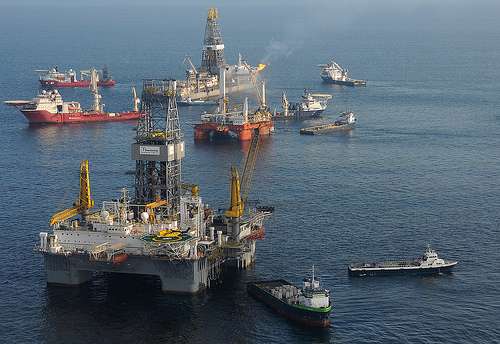Research confirms oil-replacement theory

Some years ago, the bitumen inclusions in rocks that often accompany petroleum gas deposits intrigued a CSIRO geologist.
Dr Peter Eadington speculated that gas could replace columns of oil by dissolving some or all of its more volatile components.
He retired before he was able to confirm the hypothesis, but an international research team has now proven it under laboratory conditions.
"We designed an experimental work that was mixing oil with large amounts of gas to reproduce the phenomenon we call 'gas washing' of oil," CSIRO earth scientist Julien Bourdet says.
They analysed quartz samples from the Phuong Dong gas condensate field in Vietnam's Cuu Long Basin.
These have large pores containing petroleum inclusions.
The team then attempted to reproduce similar compounds by exposing samples of light crude oil from Australia's North West Shelf, and a heavy crude oil blend from the Middle East, to various gases.
In a series of experiments they sealed the oils in containers of methane, ethane, or propane, with and without water and at various temperatures.
Under some conditions, the gas dissolved all of the oil.
Research proves "gas washing" suggestions
In other experiments most of the gas dissolved, leaving a solid or more viscous residue.
Dr Bourdet says the experiments confirm Dr Eadington's "gas washing" hypothesis.
When gas did not completely mix with the oil, molecular partitioning between the oil and the new gas charge tended to change the composition and properties of the residual oil.
Dr Bourdet says petroleum gas is often found in or near rocks with solid petroleum inclusions, such as bitumen or wax.
He says geologists observing such inclusions may infer the presence of petroleum deposits dispersed or largely dissolved by the gas.
"It was a positive correlation between the natural process and experiment," he says.
"More than that, we explained the process.
"The presence of a paleo-oil column is inferred prior to migration of gas into the reservoir.
"We were thinking that sometimes oil in a reservoir can accumulate and disappear by the arrival of large amounts of gas."
Gas washing may also affect the viscosity of crude oils: North West Australian light crude has a consistency much like dirty kerosene whereas Middle Eastern crude is thick, like molasses.
The inconsistency was previously thought to reflect the various organic sources of petroleum.
Dr Bourdet says limited amounts of gas travelling through an oil column may also render it more viscous by dissolving some aromatic fractions.
Provided by Science Network WA














